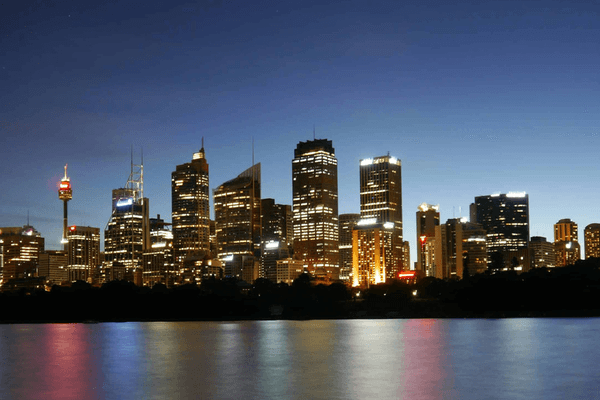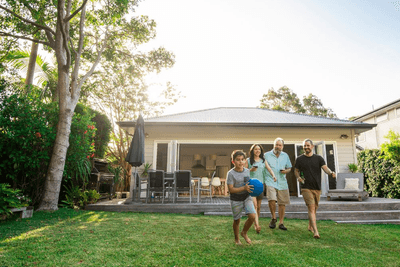
Share
Australia’s CBD retail markets are recovering post-pandemic, with Sydney and Melbourne leading the way in luxury retail. Brisbane and Perth are also expanding their premium offerings.
Australia’s central business districts (CBDs) are showing signs of recovery, with luxury retail playing a key role in revitalising these areas post-pandemic. Sydney, in particular, has emerged as a hub for high-end domestic and international brands, driven by strong consumer demand and an influx of international visitors. Melbourne, Brisbane, and Perth are also seeing a shift towards luxury retail, although at different paces and in different phases of growth.
Sydney’s rise as a luxury hub
Sydney has firmly positioned itself as Australia’s leading luxury retail destination, with nearly a quarter of its shops dedicated to high-end brands. This shift is reflected in its low retail vacancy rate, currently at 5.8%, making it the strongest market in the country. Areas like King, Castlereagh, and George Streets are key locations for luxury brands, and this trend is bolstered by affluent local consumers and tourists who are increasingly spending on luxury goods.
The harbour city’s retail offering has adapted quickly post-pandemic, with upscale retail premises driving growth. The strong performance of the luxury sector reflects the resilience of Sydney’s market and its ability to attract both local and international luxury brands. This trend is expected to continue as international tourism rebounds.
Melbourne and Brisbane following suit
Melbourne is not far behind, with Collins Street solidifying its reputation as the centre of the city’s luxury shopping. All major luxury brands are represented on this prestigious strip, where the vacancy rate stands at 10%. Melbourne’s retail scene benefits from a mix of local and international shoppers, and the city’s unique blend of heritage and modern retail spaces attracts premium tenants.
Brisbane, meanwhile, is becoming a rising player in the luxury market. Its retail core now dedicates nearly 10% of its prime spaces to luxury brands. Queens Plaza and Edward Street are the focal points of this growth, and the city’s expansion in luxury retail is reflective of broader consumer trends favouring premium products.
Perth’s growing presence and challenges in Canberra
Perth’s luxury sector is smaller but growing, with 5.3% of its prime retail spaces dedicated to high-end brands. Recent developments such as Raine Square have brought international luxury brands to the city for the first time, expanding Perth’s profile in this sector. This indicates a maturing market and increasing demand from both local and international shoppers.
Canberra, on the other hand, faces challenges in attracting luxury tenants. The capital has the highest vacancy rate among major Australian cities, currently sitting at 15.5%. While it has a strong food and beverage offering, the inconsistent quality of retail spaces makes it difficult to lure premium brands. That said, there are opportunities for new developments to attract luxury brands as the market evolves.
Shifts in retail mix
The mix of retail offerings in Australia’s CBDs has shifted, particularly with the rise of e-commerce and the impacts of the pandemic. Sydney and Perth lead in clothing and soft goods retail, comprising a significant portion of their retail mix. Sydney, in particular, is known for its high concentration of personal and household goods stores, which are closely tied to the luxury sector—especially jewellery.
Melbourne and Brisbane are also seeing growth in personal goods, with an uptick in luxury fashion, watches, and jewellery. These categories are expected to continue growing, especially as international travel resumes and consumer confidence in these sectors strengthens.
Affordable luxury on the rise
Interestingly, there is also a growing trend in “affordable luxury,” which refers to specialised high-quality food retailers offering premium products at more accessible price points. Upscale pastry shops, chocolatiers, and gourmet food stores are becoming increasingly popular across Australia’s CBDs, providing a taste of luxury to a broader consumer base. This trend is especially evident in Sydney and Melbourne, where these types of retailers are thriving.
As Australia’s retail markets adapt to post-pandemic realities, creating spaces that cater to both locals and tourists, as well as attracting a strong weekday workforce, will be crucial for the long-term success of retail precincts.
Further questions
What is driving the recovery of luxury retail in Australia’s CBDs?
Which cities are leading Australia’s luxury retail recovery?
How has the retail mix in Australian CBDs changed post-pandemic?
What is 'affordable luxury,' and how is it influencing CBD retail?
Why is Canberra struggling to attract luxury retail brands?
This is general information only and is subject to change at any given time. Your complete financial situation will need to be assessed before acceptance of any proposal or product.





